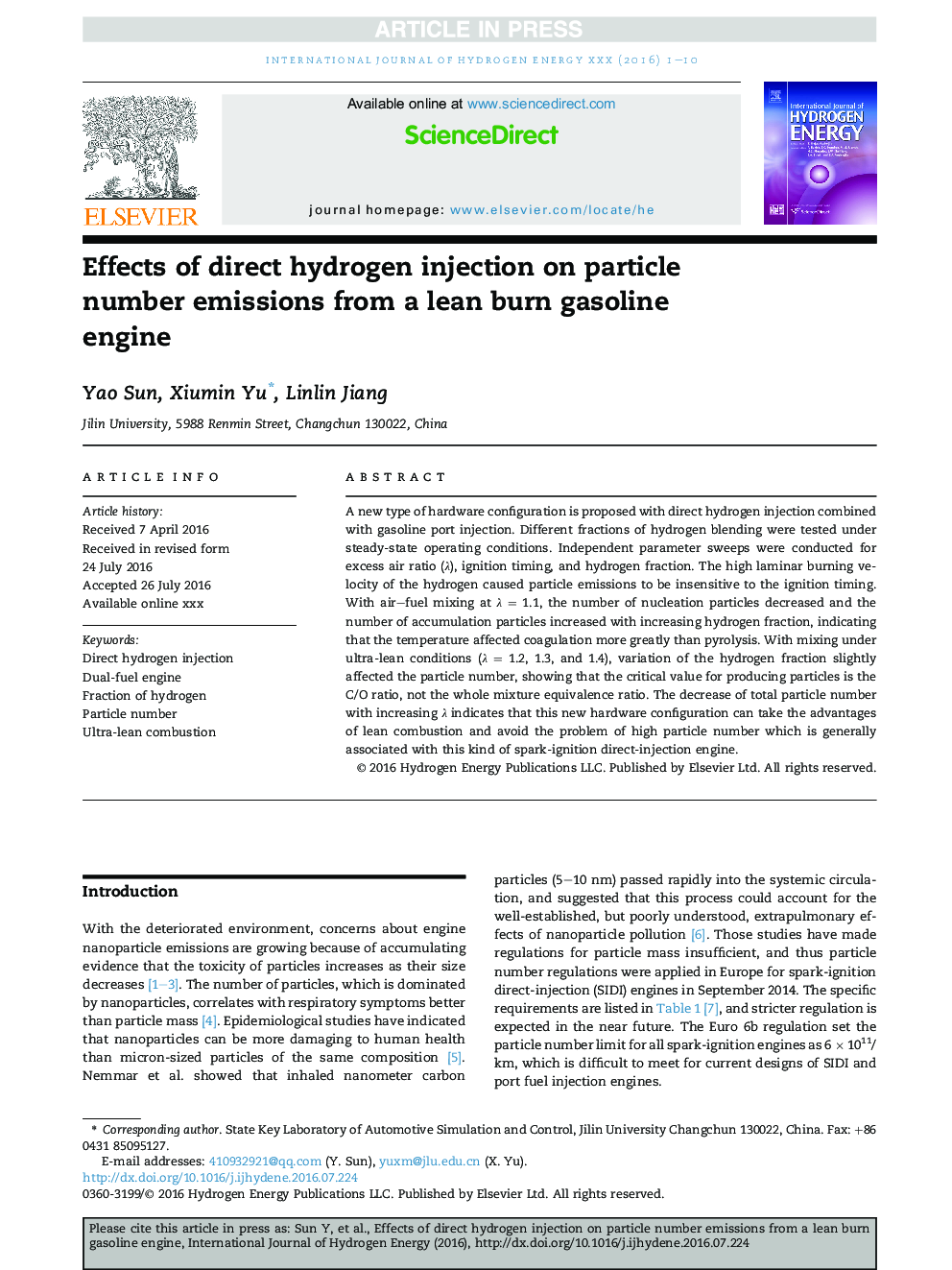| Article ID | Journal | Published Year | Pages | File Type |
|---|---|---|---|---|
| 5147412 | International Journal of Hydrogen Energy | 2016 | 10 Pages |
Abstract
A new type of hardware configuration is proposed with direct hydrogen injection combined with gasoline port injection. Different fractions of hydrogen blending were tested under steady-state operating conditions. Independent parameter sweeps were conducted for excess air ratio (λ), ignition timing, and hydrogen fraction. The high laminar burning velocity of the hydrogen caused particle emissions to be insensitive to the ignition timing. With air-fuel mixing at λ = 1.1, the number of nucleation particles decreased and the number of accumulation particles increased with increasing hydrogen fraction, indicating that the temperature affected coagulation more greatly than pyrolysis. With mixing under ultra-lean conditions (λ = 1.2, 1.3, and 1.4), variation of the hydrogen fraction slightly affected the particle number, showing that the critical value for producing particles is the C/O ratio, not the whole mixture equivalence ratio. The decrease of total particle number with increasing λ indicates that this new hardware configuration can take the advantages of lean combustion and avoid the problem of high particle number which is generally associated with this kind of spark-ignition direct-injection engine.
Related Topics
Physical Sciences and Engineering
Chemistry
Electrochemistry
Authors
Yao Sun, Xiumin Yu, Linlin Jiang,
